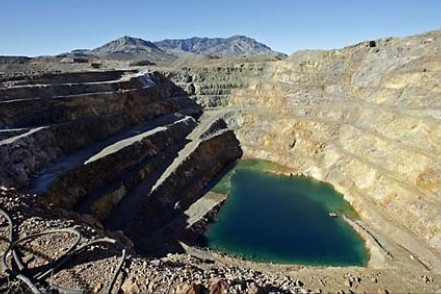China’s dream for rare earths rests on grim costs
By Chris Buckley, with additional reporting by David Gray in Baotou and Sabrina Mao in Beijing; editing by Ken Wills and Jonathan Thatcher
Wed Nov 3, 2010 2:22am EDT BAOTOU China (Reuters) – China’s quest for a green future built on rare earths metals seems a world away from Ren Limin as he casts lumps of one of the metals in a chemical-spattered shed thick with acrid fumes. Ren tends cauldrons of sputtering acid, additives and ore in a shed in north China’s Inner Mongolia region, smelting lanthanum, one of the 17 rare earths that Beijing hopes will power the nation up the clean technology ladder. Yet Ren and a workmate use few safety protections as they stir and poke the red-hot cauldrons. Holes in the roof and windows act as main ventilation. … Near Baotou city, where Baotou Steel Rare-Earth Group processes the metals on a vast scale, villagers said the resulting toxins were poisoning them, their water and air, crops and children. At least one official has backed that claim. “If we take into account the resource and environmental costs, the progress of the rare earths industry has come at a massive price to society,” Su Wenqing, a Baotou rare earths industry official wrote in a study published last year. … At the heart of Baotou’s rare earths smelting, those environmental aspirations are blighted by pollution that can cut visibility around the main plants to a few dozen meters. Su Wenqing, the Baotou industry official, wrote that companies there had dumped tailings, including mildly radioactive ore scrap, into local water supplies and farmland and the nearby Yellow River, “creating varying levels of radioactive pollution.” … But villagers near the rare earths plant live in a blanket of fumes, a constant reminder of how much China still allows near-unfettered industrial growth. Separating out the minerals is usually done by dousing the rare earths in acids and other chemicals. The tailings from Huamei and other nearby metals plants end up at a 10 square kilometer dam. The reservoir can hold 230 million cubic meters of the dark, acrid waste. That, according to a sign on its banks, is equal to 92,000 Olympic-sized swimming pools. The residents of Xinguang village said the chemicals from the dam have been seeping into the underground waters that feed their wells, crops and livestock, including fluoride. They complained of nausea, dizzy spells, arthritis, migraines, wobbly joints and slow-healing injuries. “The pollution is too much for even our crops to grow, and a lot is from the rare earths plants,” said Wu Leiji, a ruddy-faced farmer. “It’s not getting any better. In fact, it’s worse.” “Look at the kids. They’re the worst off. What will all this pollution do them?” A report last month in a Chinese newspaper, the Yangcheng Evening News, cited experts supporting the villagers’ complaints of damaged health from rare earths and other smelting pollution. “When we boil the water to drink, this white scum forms on top and it tastes bitter,” said Guo Gang, a 58-year-old farmer. “We used to grow vegetables, but now all we can grow is corn, and even the crops for that are far smaller than 10 years ago.”
